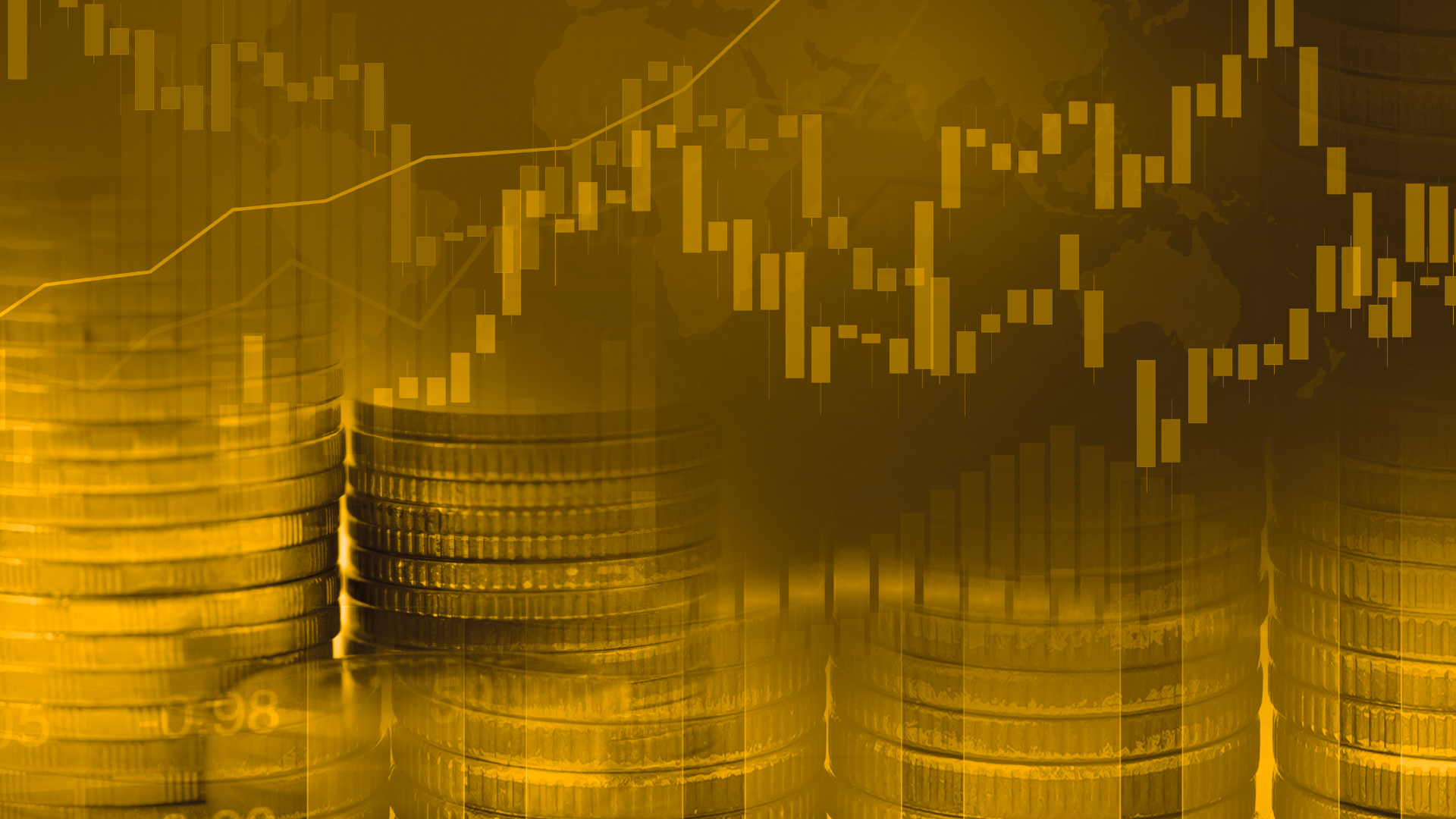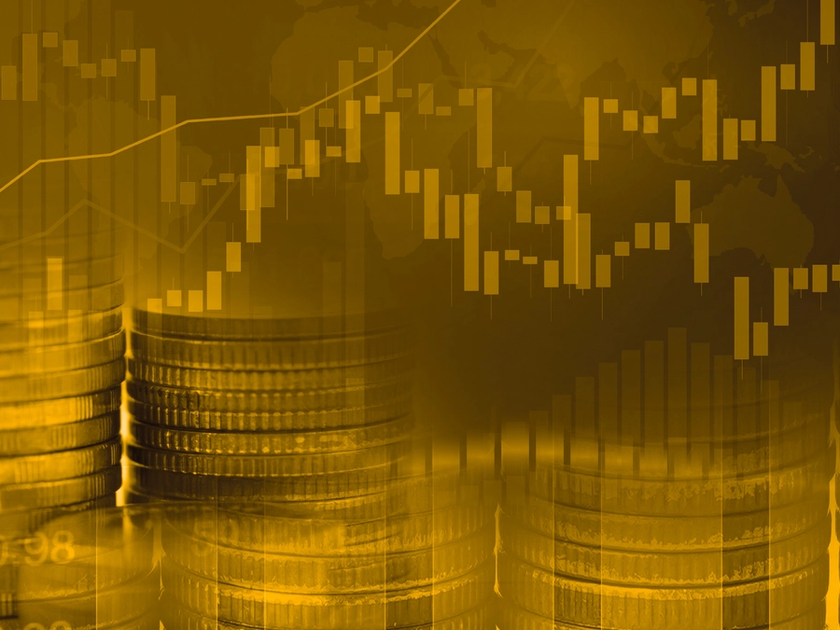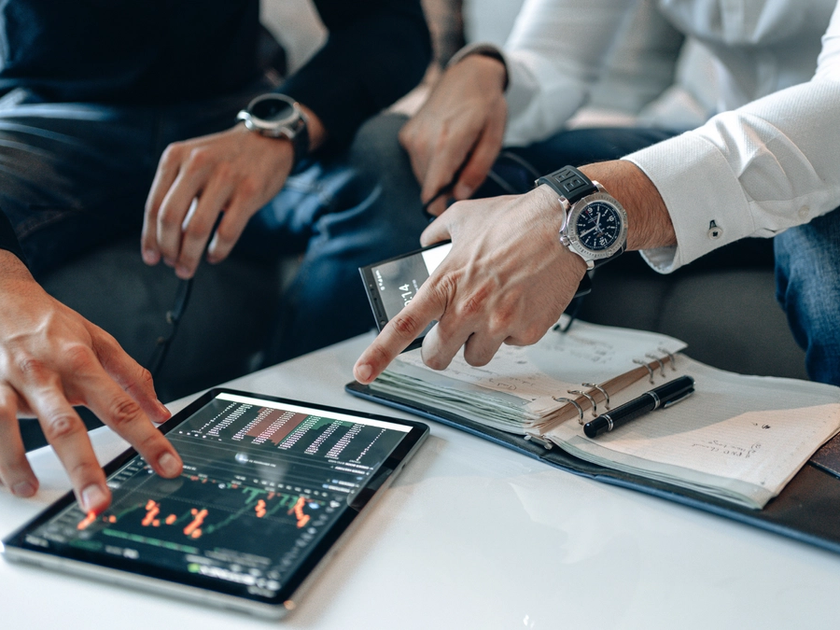What is terra?
Terra (LUNA) is a cryptocurrency, and as of July 2022, terra had a market value of 1,6 billion DKK, according to Coinbase. In July 2022, one terra - also called terra coin, or just LUNA - was worth 12,5 DKK. One month prior, the value of a single terra coin was around 46,5 DKK. That’s a decrease of about 73%.
- Table of contents:
- What’s the difference between terra and luna?
- The terra story: who created terra and why did the crypto plummet in value in May 2022?
- What’s the purpose of a stablecoin (terra)?
- What’s the purpose of terra’s crypto coin (LUNA)?
- Why did terra plummet in 2022?
- Historic rate developments for terra’s three coins: UST, LUNC and LUNA
- What’s the idea behind terra?
- How to get started trading terra
The large fall was connected to a number of updates on the blockchain that terra made during May of 2022. And before the updates, terra also lost up to 45 billion dollars in value and fell 99% - all in the span of two weeks.
And how such a large fall could even happen, you can read all about in this post. If you’re new to cryptocurrency , and want to learn more about how a crypto coin could lose basically its entire value from one day to the next, terra’s story is a great place to start.
Table of contents:
- What is terra?
- The terra story: Who created terra, and why did the crypto plummet 99% in value?
- What’s the purpose of a stablecoin (terra)?
- What’s the purpose of terra’s crypto coin (LUNA)?
- Why did terra plummet in 2022?
- Historic rate development for terra’s three coins: UST, LUNC and LUNA
- Rate development for luna classic (LUNC)
- Rate development for TerraUSD (UST)
- Rate development for terra (LUNA)
- What’s the idea behind terra?
- How to get started trading terra
What’s the difference between terra and luna?
For newcomers, it can be hard to make sense of what terra actually is. This is because the name terra both is the name of the company behind the crypto , and the name of the crypto itself, but also the name of the blockchain and protocol, that make out the technical foundation of the crypto.
The company is called Terraform Labs, but you would often see people just calling them terra. Terraform Labs has developed a set of crypto coins: luna and terra.
Luna is a “classic” cryptocurrency, while terra is a so-called stablecoin. The terra stablecoin is pegged to a certain currency - such as the American dollar (USD). In that case, Terraform Labs’ stablecoin would be called TerraUSD (UST).
It can also be pegged to a different currency - such as the South Korean won. Here it would be called TerraKRW instead.
Terra is then an umbrella term for the many different stablecoins. When people are talking about terra in general, they’re typically referring to the American stablecoin, TerraUSD (UST).
But at the same time, terra is also the name of the blockchain technology that makes up the entire foundation of the cryptocurrency and stablecoins.
The terra story: who created terra and why did the crypto plummet in value in May 2022?
Terra was founded in 2018 by the South Korean company Terraform Labs, spearheaded by the developers Do Kwon and Daniel Shin, and in 2019, the cryptocurrency was formally launched.
At the time, terra consisted of two coins: A stablecoin (terra) and a “regular” crypto coin (LUNA). To understand the rest of terra’s history, we first need to clarify what the idea with the two coins is all about.
What’s the purpose of a stablecoin (terra)?
Terra’s vision was to develop a cryptocurrency that didn’t fluctuate as dramatically as cryptocurrencies usually do .
That’s why Terraform Labs developed a stablecoin, where the name itself would indicate stability. A stablecoin is a digital coin that’s pegged to the value of a certain fiat currency - meaning “paper money” or legally declared currency, such as the American dollar.
The name of terra’s stablecoin depends on the fiat currency it tries to follow. Among others, they have developed a stablecoin that’s pegged to the American dollar called TerraUSD (UST), and one that’s pegged to the South Korean won, called TerraKRW (KRT).
Terra’s stablecoins are algorithmic. This means that the value of their stablecoins stabilise through advanced computer programs, who use algorithms to control supply and demand, thus allowing a more stable price.
What’s the purpose of terra’s crypto coin (LUNA)?
Terra also has a “regular” crypto coin called luna. The purpose of luna is to balance out the value of terra.
Luna and terra are then in a reciprocal relationship with each other. When the demand on a terra coin (such as UST) increases, it would result in a higher price.
But because terra is supposed to follow the rate developments for the American dollar, the price needs to be revised downwards.
This happens by producing more terra coins, to make the value of them drop. Producing new coins is also called minting - at least for proof-of-stake blockchains such as terra’s. In proof-of-work blockchains such as bitcoin and ethereum, producing new coins is called “mining”.
Tip: Learn more about what proof-of-stake and proof-of-work actually is here .
Fast facts:
Producing new coins is called minting in English. In Danish it’s called prægning. Both words are the original terms that central banks also use when producing new coins today.
Before new terra coins can be produced, an equivalent amount of luna coins need to be removed first. The same goes for the opposite situation - so when the value of terra drops, terra coins need to be removed until the value reaches the dollar-value. To remove that amount of terra coins, an equivalent amount of luna coins must be produced at the same time.
Fast facts:
Removing coins from a crypto network is called burning. The network is “burning” their coins to get the value of the remaining coins to increase. If a 100 coins is worth 100 DKK, a single coin has a value of 1 DKK. But if 10 coins get burnt, there will be 90 coins left, and a single coin will now have a value of 1,11 DKK .
The reciprocal relationship between terra and luna is then the fundamental vision with the cryptocurrency. The names of the two coins are also referencing their relationship, where terra means earth, and luna means moon.
In financial terms, this strategy is also called arbitration.
Why did terra plummet in 2022?
Let’s circle back to the initial question: Why did terra plummet in May 2022 and lost 99% of its value?
A stablecoin such as terra is a derivative. This means that the value of terra is derived by a different asset - such as the American dollar.
This also means that terra isn’t necessarily providing the financial security for its market value as its stablecoin represents.
Example:
Let’s say there's 1,000 TerraUSD (UST), which follows the rate of the dollar. The total market value for UST is then 1,000 dollars.
But because UST is a derivative, there’s no assurance that terra actually has 1,000 dollars lying around. The value of UST is then dependent on the reciprocal trust between the terra network’s investors.
If you begin losing trust in terra, then you would most likely start to sell your coins to get your money back. Let’s say you sell 100 UST coins.
Now, the value of UST will drop, because the demand is smaller and the supply is larger, because you sold your coins.
So, to stabilise the value, the terra network can choose to burn UST coins and mint new luna coins.
But when you sold your 100 coins, and the value of UST fell momentarily, it also sent a signal to the other investors that they probably should sell their coins as well.
Like that, your sale kickstarted a wave of panic selling across the network, and the value of UST fell at the same pace. An attempt to solve the problem by minting even more luna coins and burning some of the existing coins.
Now, a lot more luna coins are brought into circulation, and that makes the value of luna coins drop.
And because terra doesn’t have an actual vault with money - again, because terra is a derivative - that can back the value of the cryptocurrency up, there’s only way to go for the rate. And that’s downwards.
And here’s exactly what happened to terra
Had terra had 1,000 dollars to back the value of UST up, they would’ve been able to stabilise the rate. And terra also had some money saved up in their reserves, exactly for the purpose of protecting the cryptocurrency against sudden rate drops.
But, the reserves, who as of May 16th consisted of around 80,000 bitcoin (which at the time was equivalent to around 17 billion DKK) wasn’t enough to protect terra against the wave of panic selling.
The panic was kickstarted by a transaction on May 7th, where an investor sold 85 mil. UST. This made the UST’s rate drop to $0,985.
Terra tried to keep UST pegged to the dollar’s rate, but it was too late. The panic spread like wildfire among investors, and it resulted in several UST panic sales.
It also affected the value of luna, which is pegged to the value of UST. A couple of days later, May 13th, terra could declare bankruptcy, now that the value of a single luna coin was worth just 0,000120 DKK.
In comparison, a single coin was worth 603,71 DKK on May 5th. That’s equivalent to a drop of 99,9% - all in under 10 days.
The reaction from Do Kwon, the ringleader behind the cryptocurrency, was to start the terra project all over again. That’s why he launched terra 2.0. The new version 2.0 doesn’t have a stablecoin, so now it’s exclusively the cryptocurrency terra (LUNA), that can be traded.
The old version is still in operation, and you can still buy and sell the old coins, but future developments and focus will be primarily on version 2.0.
Sources:
Rate values in DKK are based on data from Coinbase . The historic development of terra’s collapse along with rate values in dollars are based on articles from Coindesk .
Historic rate developments for terra’s three coins: UST, LUNC and LUNA
Because terra covers three different coins, we’ve gathered the historic rate development for each of them, to give you a more complete picture on how the cryptocurrency has been doing the past couple of years.
Rate development for luna classic (LUNC)
In April 2021, the value of a luna classic coin was around 761,5 DKK according to Coinbase.
In May 2022, after the big crash, the value dropped down to 0,00012 DKK.
That’s a drop of around 99,9%.
See the current rate of luna classic .
Rate development for TerraUSD (UST)
As of April 2021, the rate of a UST coin was around 6 DKK, which at the time was equivalent to the rate of the American dollar.
In May 2022, after the big crash, the value dropped to around 0,5 DKK.
That’s equal to a drop of 91,6%.
Rate development for terra (LUNA)
The new terra coin, which also goes by the name of LUNA, had a value of around 46,5 DKK in June 2022.
In July 2022, the value was 12,5 DKK.
That’s equivalent to a drop of 73,1%.
What’s the idea behind terra?
Terra is a public (open-source) blockchain that uses proof-of-stake to validate transactions. That’s opposite to cryptocurrencies such as bitcoin and ethereum who both use proof-of-work.
The original purpose with terra was to create a stablecoin, that wasn’t exposed to the same volatility as other cryptocurrencies - meaning the fact that cryptocurrencies generally rise and fall dramatically in short amounts of time.
That’s why terra’s blockchain originally was equipped with two different crypto coins:
- Luna = A native crypto coin, used for staking og governance .
- Terra = a stablecoin, which is pegged to certain currencies. For example, there’s a stablecoin pegged to the American dollar - called TerraUSD (UST). There’s also a stablecoin pegged to the South Korean won - called TerraKRW (KRT).
The two coins, luna and terra, depend on each other. If one goes up in price, the other falls, and vice versa. Like that, the terra network could, in theory, better keep track of the cryptocurrencies’ values and thus create a stablecoin that brings the best of both worlds together: A stable currency, that doesn’t fluctuate in value, but at the same time a digital and decentralised currency compatible with blockchain currency.
How to get started trading terra
With Lunar Block , getting started with trading terra is easy. All you have to do is download the free Lunar app, and sign up to Lunar Block.
You need to complete a test in connection with the sign up where we will ask about your knowledge of the risks connected to cryptocurrency , among other things. You can get to know the risks in the app, before you take the quiz. When you’re approved, you can trade terra right away.
Get started with terra
- 1
Download Lunar for free
Go to App Store or Google Play and download the Lunar app. Find your photo ID, as you need that to sign up.
- 2
Sign up to Lunar Block in the app
Find Lunar Block under “Products” and sign up. You’ll be asked to take a test about crypto first - among others things, it’s to see if you’re aware of the risks. You can learn more about the risks in the app before you take the test.
- 3
Buy terra with a single swipe
When we’ve approved you, you can buy crypto immediately. Choose your cryptocurrency in the app and buy with a single swipe.
Cryptocurrencies can rise and fall
When you trade cryptocurrencies, you need to be aware that it carries a large risk. The value of your cryptocurrency can both rise and fall, and you can risk losing the entire amount you’ve invested in cryptocurrencies.
Cryptocurrency trading is done through Lunar Block. Lunar Block is not regulated by the Danish Financial Supervisory Authority (Finanstilsynet). That means you won’t have the same protection as when trading e.g. stocks or other regulated assets.
We do not counsel
We do not advise on currencies and do not make recommendations for either buying or selling. We can provide factual information about the different currencies, but past price developments are not an indication of future developments.
No information from Lunar Block should therefore be considered as recommendations and all decisions are up to you alone.
Last updated April 18, 2023. We’ve collected general information. Please note, that there may be specific circumstances that you and your business need to be aware of.
Last updated April 18, 2023. We’ve collected general information. Please note, that there may be specific circumstances that you and your business need to be aware of.
You might also like...
Where can I pay with solana?
Cryptocurrency is becoming so widespread and acknowledged abroad that you can use the currency just like regular payment methods on some...
How do you buy solana as regular stocks?
Because solana (SOL) is a currency, and not a business, you can’t actually invest directly in solana like it’s a stock.
Are cryptocurrencies a good investment?
Cryptocurrencies can be a great addition to your portfolio - if you’re willing to run the risk. Cryptocurrencies are “high risk - high...
What is bitcoin?
Bitcoin is a digital currency, or cryptocurrency, as it’s also called. Bitcoin is the first and largest cryptocurrency measured on market...


